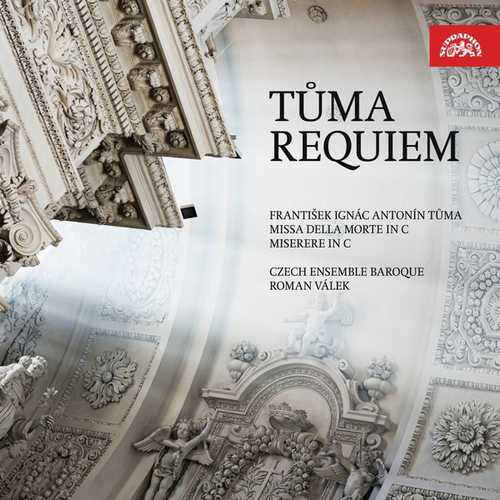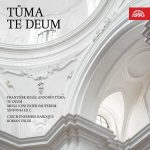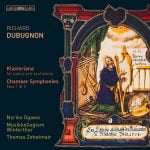

Composer: František Ignác Antonín Tùma
Performer: Markéta Böhmová, Romana Kružíková, Monika Jägerová, Lucie Karafiátová Netušilová, Jakub Kubín, Jiří M. Procházka, Elen Machová, Czech Ensemble Baroque Choir
Orchestra: Czech Ensemble Baroque Orchestra
Conductor: Roman Válek, Tereza Válková
Format: FLAC (tracks)
Label: Supraphon
Catalogue: SU43002
Release: 2021
Size: 977 MB
Recovery: +3%
Scan: yes
Requiem. Missa della morte in C
01. No.1, Requiem aeternam I
02. No.2, Te decet hymnus
03. No.3, Requiem aeternam II
04. No.4, Kyrie eleison I
05. No.5, Christe eleison
06. No.6, Kyrie eleison II
07. No.7, Dies irae
08. No.8, Tuba mirum
09. No.9, Iudex ergo
10. No.10, Rex tremende maiestatis
11. No.11, Recordare, Jesu pie
12. No.12, Iuste iudex
13. No.13, Huic ergo parce, Deus
14. No.14, Domine Jesu Christe
15. No.15, Quam olim Abrahae
16. No.16, Sanctus
17. No.17, Benedictus
18. No.18, Osanna in excelsis
19. No.19, Agnus Dei
20. No.20, Cum sanctis tuis
Miserere in C
21. No.1, Miserere mei, Deus
22. No.2, Amplius lava me
23. No.3, Tibi soli peccavi
24. No.4, Ecce enim
25. No.5, Auditui meo dabis
26. No.6, Ne projicias me
27. No.7, Domine, labia mea aperies
28. No.8, Sacrificium Deo spiritus
29. No.9, Benige fac, Domine
František Ignác Antonín Tůma was one of the Czech composers to have considerably influenced 18th-century European music. Along with J. D. Zelenka and G T. Muffat, he has been named among the finest pupils of Johann Joseph Fux, and, just like Zelenka, he rubbed shoulders with the political and social elite of his time. He was highly esteemed in Vienna, with his sacred music even serving as a model for younger composers, including Joseph Haydn and W. A. Mozart.
A dexterous theorbist and gambist, at the age of 19 Tůma most likely participated in the celebrations marking the coronation in Prague of Emperor Charles VI in 1723. Nineteen years later, in 1742, Tůma’s Requiem in C accompanied the soul mass for the self-same monarch on the occasion of the transfer of his remains to the sarcophagus in the Capuchin Crypt in Vienna. At the time, Tůma worked as Kapellmeister of the music ensemble set up by Charles’s widow, Empress Elisabeth Christine.
The Requiem in D minor, whose instrumentation was commensurate to the significance of the event (the orchestra was enhanced by a cornett, two trombones, a bassoon and two natural trumpets), was again heard at the funeral of Elisabeth Christine herself, in 1750. Tůma enjoyed great respect on the part of Empress Maria Theresa, who probably personally commissioned from him the Miserere in C. It comes as no surprise that following four acclaimed recordings of F. X. Richter’s works Czech Ensemble Baroque have focused on Tůma. His music definitely deserves our attention.



